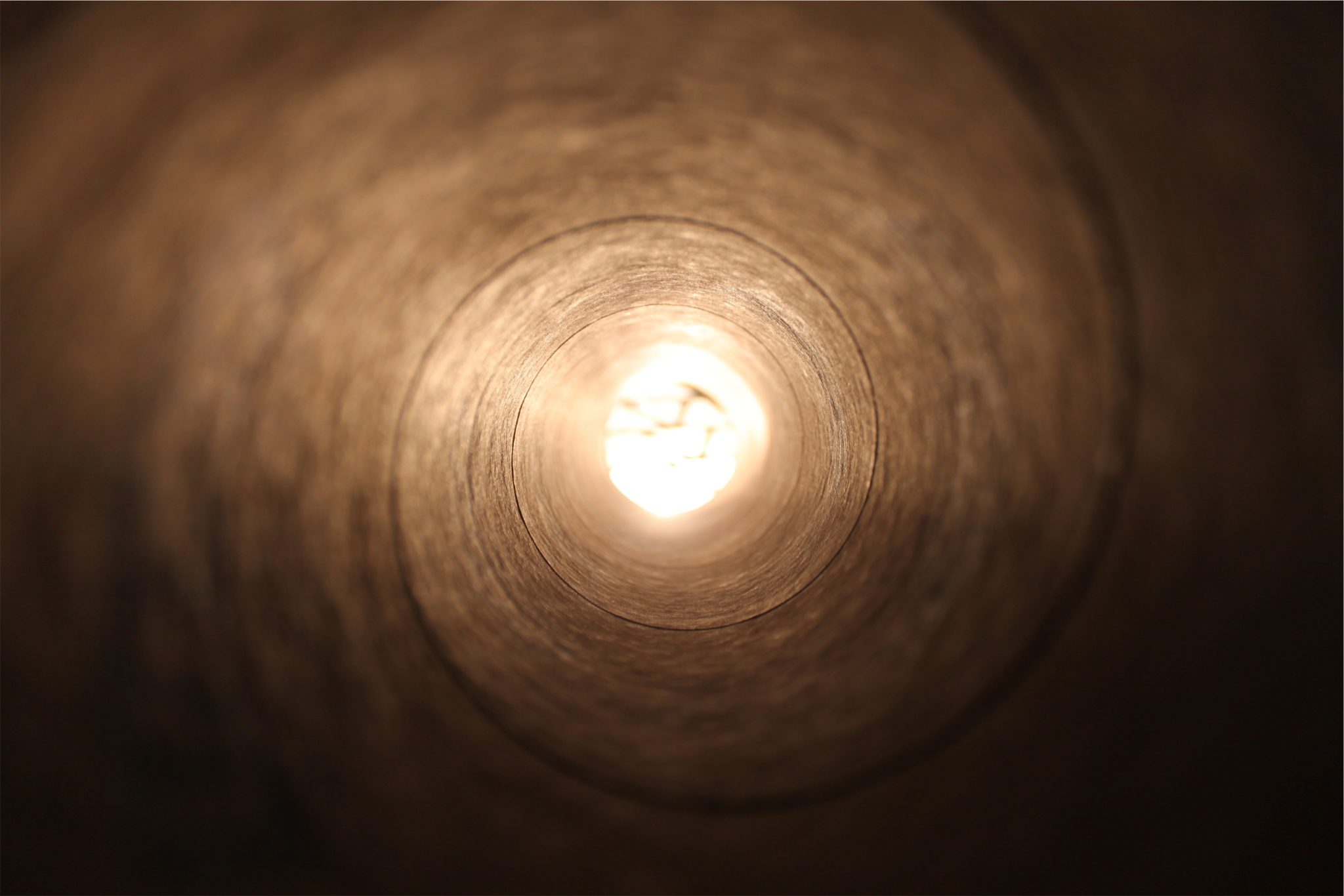Shanah, the Hebrew word for “year,” means both “repeated” and “different.” Indeed, the Jewish year exemplifies how a faithful repetition of something might also profoundly differ from it.
Each annual journey through the Jewish calendar follows the same roadmap and passes through the same landmarks. Each embarks from a two-day Rosh Hashanah, immerses in the awe of Yom Kippur, enters within the unifying walls of the sukkah, dances on Simchat Torah, kindles the lights of Chanukah, is inebriated with joy on Purim, is liberated on Passover, climbs the 49-step sefirah ladder to Shavuot, mourns in the “Three Weeks,” and culminates in the warm embrace of Elul. And yet, how different is each journey from its predecessors! We are a year older, wiser and holier. What was last year’s “experience” and “achievement,” is this year’s norm; now, the challenge is to transcend our last year’s self with a more exalted awe, a deeper joy, a more liberated freedom.
Furthermore, the very structure of the Jewish calendar provides us with a different journey each year. The itinerary is the same, the landmarks are affixed to the same points in the roadmap, but there are subtle changes in the terrain. The year might be longer by a month[1] or the month shorter by a day[2]; the Passover seder, held on a Wednesday night one year, might be conducted on Shabbat eve on another, and on the night after Shabbat on a third year, each instance introducing new nuances into our experience of freedom; the grief of Tishah B’Av might be supplanted by the delight of Shabbat; or the festive meals of Shabbat might be sublimated into fasting and prayer when the holiest day of the week coincides with the holiest day of the year. Time, for the Jew, is defined by several incongruent cycles—the weekly cycle set by the seven days of creation, the monthly cycle set by the phases of the moon, the annual cycle of the solar seasons—and their ever-varying conferences make for a different calendar each time we repeat the familiar journey through the year.
Triple Header
A distinguishing feature of this year’s journey through time is that it begins with a succession of three holy days: the two days of Rosh Hashanah—which fall on Thursday and Friday—followed immediately by Shabbat, the weekly day of sacred rest.
In Torah law, a three-time occurrence achieves the status of chazakah—a “strengthened” or firmly established phenomenon.[3] For example, if an ox gores another ox, the owner of the attacking ox is absolved from full payment of the damage it inflicted; since it is considered uncommon behavior for a domesticated beast to attack another animal, this was not an occurrence that the owner might reasonably have foreseen and been expected to prevent. However, if the ox gores another ox on three different occasions, this becomes the “normal” behavior of this particular beast, and its owner becomes fully responsible for the damage it causes. The ox now has a chazakah of violent behavior toward other animals.
Ordinarily, the holy days in our lives are exceptions to the rule, as opposed to the days devoted to material pursuits, which are the norm. This makes the task of fulfilling the ultimate function of Shabbat and the festivals, which is to carry forth their sanctity and spirituality into the ordinary days of the year,[4] a most difficult and challenging task: we are being called upon to impart an “abnormal” quality to a “normal” day.
But when the year opens with three successive holy days, holiness becomes the norm. A chazakah of holiness empowers us to regard the mundane areas of our lives as abnormal, and the sanctity with which we are to imbue them as natural and necessary to our existence.
Condensed Time
The Jewish calendar contains several possibilities for three successive days of holiness. Yet the particular constellation of two days of Rosh Hashanah followed by Shabbat is unique in several respects.
Firstly, because “Rosh Hashanah” is not merely the year’s beginning, but—as a literal translation of the term implies—the “head of the year.” This reflects the Kabbalistic conception of creation, by which the entirety of time was created by G-d in a single instant; what we experience as “time” is but the unfolding of that instant into myriads of particulars, which we then experience as a succession of “moments” aligned one after the other. In other words, G-d did not create the world in one state—its state in the first moment of time—and then allow or compel its development into its state in the next moment, and then the next, and so on: rather, He created all states of existence simultaneously. The fact that we relate to these states in terms of “past,” “present” and “future” is only because we experience them one at a time, one “after” the other.
This “timeliness,” or the fractionalization of creation into so many time-segments, is a feature of our physical world; the higher, more spiritual worlds are less finite, less fragmented. Thus, the seder hishtalshelut—the chain of “worlds” that make up the created reality—can be said to resemble a pyramid. At the highest point of the pyramid—the divine act of creation—all of time and history is encapsulated within a single point. At a lower “world” or dimension of reality, the point fans out into seven components (the seven days of creation), each embodying one of the seven millennia of history.[5] In lower worlds, these are further broken down into successively more detailed segments.[6] Finally, in the lowest strata of creation—our physical world—the singular act of creation is broken down into the innumerable moments of time that comprise our “reality.”
Nevertheless, we are not completely locked into the moment-bound nature of the physical world. In the calendar He ordained in His Torah, G-d inserted days and moments of higher, more “concentrated” time. Shabbat is not just another day of the week, but a day that encapsulates an entire week in a higher, more spiritual form. The day (or days) of Rosh Chodesh (“head of the month”) contain the spiritual essence of an entire month. And the forty-eight hours of Rosh Hashanah, the “head of the year,” include within them the entire year, in the same way that the head incorporates all of the body’s faculties.[7]
This is why everything we do on Rosh Hashanah has a profound effect on the entire year. If we commit ourselves to a certain change in our behavior, it is more easily implemented than if we had made our resolution on any other day. For, in a certain sense, we have already effected this change every day of the year, since they all exist within the “condensed time” of the year’s head.
So a chazakah of holiness established on Rosh Hashanah is doubly potent, having been established in the days that “head” and encapsulate the entire year.[8]
The Dividend of Doubt
Also unique about the succession of holy days formed when the two days of Rosh Hashanah are followed by Shabbat is the fact that this is the only example of this phenomenon to occur in the Holy Land.
Outside the Land of Israel, the “holy days” of the biblical festivals (Rosh Hashanah, the first day of Sukkot, Shemini Atzeret, the first and last days of Passover, and Shavuot) are all observed for two days. In the Land of Israel, however, only Rosh Hashanah extends for two days, while all other festivals are observed for a single day only.
Historically, this is due to the structure of the Jewish calendar and the process by which its months are set. The Jewish calendar follows the phases of the moon—the night on which the new moon is first visible marks the start of the new month.[9] Originally, the new month was “sanctified” on a month-by-month basis by the Sanhedrin (supreme court of Torah law), based on the testimony of two eyewitnesses who sighted the new moon. Messengers would then be dispatched to all Jewish communities to inform them of the proper date. But the communities outside of Israel were too distant to receive word of the new month before the festivals; as a result, they fulfilled the laws of each festival for two full days, to ensure that they had observed them on the day mandated by the Torah.
This practice continued until nearly three hundred years after the destruction of the Holy Temple, during which the Sanhedrin continued to function in the Holy Land under Roman rule. In the year 361ce, however, Hillel II, the president of the Sanhedrin, recognized that the days of the Sanhedrin were numbered and that soon the dispersion of the Jewish people would reach a point where it would be impossible to maintain contact between all the communities of the Diaspora. He therefore established a calendar system by which the years and months could be calculated in advance. Hillel’s Sanhedrin then “sanctified” all subsequent months until the coming of Moshiach, when the Sanhedrin will be re-established.
Today, then, there is no longer any doubt as to the exact date of the biblical festivals. Nevertheless, the practice of observing two days for each festival continues. The circumstances that brought us “the second festival day of the Diaspora”—our distance from the Holy Land, the ignorance and doubt spawned by galut (the exile)—were negative, but their yield was decidedly positive: an additional twenty-four hours of holiness and festivity, which we have never relinquished.[10] In the Holy Land, however, only one day is observed, for there the need never arose for the festivals to be observed for more than the requisite day. The single exception is Rosh Hashanah, which, because of its particular place in the calendar, was observed for two days in the Holy Land as well.[11]
So while there are many possibilities for a three-day succession of holy days in the Diaspora—whenever one of its two-day festivals occurs in immediate proximity to Shabbat—the only case in which the residents of the Holy Land can enjoy this phenomenon is when Rosh Hashanah falls on Thursday and Friday.[12] Indeed, in such years the distinction between the Holy Land and the Diaspora is sharply emphasized: when the first day of Rosh Hashanah falls on a Thursday, so does the first day of Sukkot, which occurs exactly two weeks later on the 15th of Tishrei, and so does the festival of Shemini Atzeret, which occurs on the 22nd of Tishrei. Thus, the Diaspora has no less than three three-day spells of holiness in a single month, while the land of Israel, where the “holy days” of Sukkot and Shemini Atzeret are observed for one day only, has only one such occurrence.
Conical Time
Everything is by divine providence, especially something as basic to the cosmic order as the timing of the festivals. Thus, Chassidic teaching explains that, underlying the historical and technical reasons described above, there is a deeper reason for the difference in how the festivals are observed within the Land of Israel and outside its borders. In essence, the reason for the Diaspora’s second day is that the world outside the Holy Land requires that additional day for the function of the festival to be fulfilled. If a single day of holiness suffices to provide us with the spiritual fortitude to elevate and sanctify the “ordinary” days which follow in the Holy Land—“a land upon which the eyes of G-d are focused from the beginning of the year to the year’s end”[13]—we require two such days to infuse holiness into the more mundane lands that lie outside its borders.
(Rabbi Menachem Mendel of Lubavitch[14] compares this phenomenon to the conical nature of a beam of light: the farther it travels from its source, the greater the area over which the light is diffused. Thus, the quantity of light that is contained within one cubic foot of space in proximity to its source fills double that area at a point farther from the source. Similarly, the holiness that is concentrated in a single day in the Holy Land, the source and epicenter of G-d’s provision in the physical world, requires two complete days to “capture” it in more distant lands.[15])
By the same token, whereas a single chazakah of holiness suffices to establish the precedent for a sanctified year within the Holy Land, a chazakah of chazakot is required outside its borders. Thus, when the year begins with three successive days of holiness in the Land of Israel, this phenomenon repeats itself three times in the course of the festivals of Tishrei as observed by the communities of the Diaspora.
The Lesson
Whatever the circumstances in which we might find ourselves, we are granted the necessary tools with which to fulfill our mission in life to elevate the ordinary and sanctify the mundane. If we find ourselves outside of the Holy Land—whether in the spatial or the spiritual sense—we possess the power to “make this a Holy Land,” as one Chassidic master[16] told a follower who desired to emigrate to the Land of Israel.
And not only are we given the spiritual resources that the task requires, but also the “vessels” with which to receive them and integrate them into our lives. If our day proves too “narrow” to absorb the holiness slated for it, if a single chazakah proves insufficient to ingrain a new standard, then our holy days are doubled and trebled to accommodate our particular needs.
Based on a series of letters and talks issued by the Rebbe in the High Holiday season of 5751 (1990).[17]
Adapted from the teachings of the Rebbe by Yanki Tauber.
[1]. Every two or three years, a thirteenth month is added to the Jewish year, in order to keep it in sync with the seasons.
[2]. Most months have a fixed length of either 29 or 30 days. Two months, however—Cheshvan and Kislev—have 29 days in some years and 30 days in others.
[3]. Talmud, Yevamot 64b; et al.
[4]. See The King in the Field, WIR, vol. VIII, no. 54.
[5]. Cf. Talmud, Rosh Hashanah 31a.
[6]. Thus Rabbi Israel Baal Shem Tov, known for his ability to “ascend” to higher worlds, once forewarned his brother-in-law, Rabbi Gershon Kitover, of an event that was to befall Rabbi Gershon fifteen years later, explaining that he had seen him in the world of Yetzirah, where many years are encapsulated in a single moment (Derech Mitzvotecha, p. 59a).
[7]. The Jewish calendar thus resembles a page of “hypertext”: distributed among the “plain text” of its ordinary days are “highlighted words” which encapsulate a wealth of information—days which embody an entire week, month or year in a higher, more spiritual form. By “clicking” on these points of hyper time (observing Shabbat, sounding the shofar on Rosh Hashanah, etc.), we access the “information” they contain.
[8]. The third day of this chazakah of holiness is also a “Rosh Hashanah” of sorts: as the year’s first Shabbat, it encapsulates all the year’s Shabbatot and, by extension, all of its weekdays (Pri Eitz Chaim, Shaar Tefillot Rosh Hashanah, end of chapter 6; see introduction to The Geometry of Time, WIR, vol. VII, no. 2).
[9]. See The Sixteenth Increment, WIR, vol. VIII, no. 49.
[10]. This reflects the very essence of galut: a most negative and undesirable state which has yielded the highest achievements of our history as a people.
[11]. Because Rosh Hashanah is on the first of Tishrei—the very day on which the new month is sanctified—the Jews of Israel outside of Jerusalem (and in certain years, even the Jews of Jerusalem and the Sanhedrin itself) also had to observe the festival for two days out of doubt (see Shulchan Aruch HaRav, Orach Chaim, section 600; Zohar, part III, 231a; Jerusalem Talmud, Eruvin 3:9; Tosefta, Rosh Hashanah 1:10.)
[12]. The first day of Rosh Hashanah never falls on a Sunday, so there is no possibility for a chazakah of holiness formed by Shabbat followed by two days of Rosh Hashanah.
[13]. Deuteronomy 11:12.
[14]. The third Rebbe of Chabad-Lubavitch, the “Tzemach Tzedek,” 1789-1866.
[15]. Derech Mitzvotecha, pp. 114a-b.
[16]. Rabbi Menachem Mendel of Lubavitch (see note 14).
[17]. Sefer HaSichot 5751, vol. II, pp. 859-882; ibid., vol. I, pp. 3-6.







